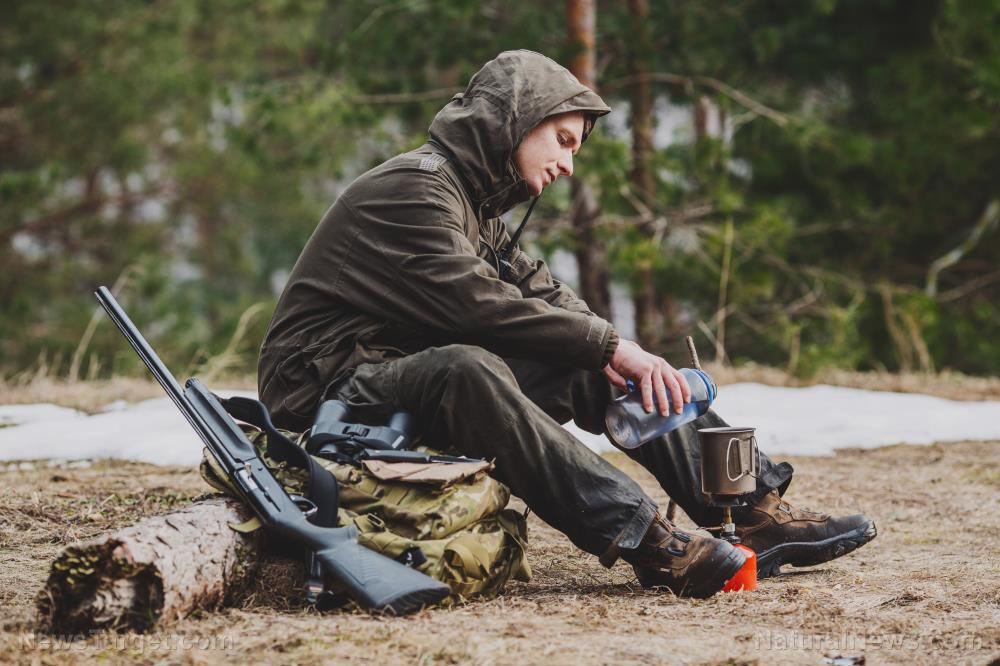
As a prepper, you need to remember that survival skills are just as important as your supplies and gear. Even if you only have basic tools in your bag, having these 10 crucial skills will allow you to survive out in the wild. (h/t to TheRealSurvivalists.com)
(1) Firestarting
If you know how to start a fire using modern prepping gear and basic materials like flint, steel, and wood, you can stay warm, cook food, and boil water.
Fire doesn't just cook your food, it also helps boost your morale. Knowing that you can start a fire using simple materials can give you the confidence boost that you need to survive for several days out in the woods.
When packing your bug-out bag (BOB), make sure you have several firestarters included in your gear.
(2) Getting shelter
When SHTF, a shelter can spell the difference between life and death. Make sure you know how to set up a safe shelter or build a rudimentary tent out of sticks and tree branches.
(3) Master the layering system
It might seem tempting to wear a bulky jacket when the weather is cold, but the key to staying warm is the layering system. The layering system ensures that you don't get too hot or too cold.
Wear several thin layers with a protective waterproof on the outside, instead of one thick coat or jacket. If you start sweating when you're on the move, take off some layers or slow down.
Here are some tips to help you learn the proper layering technique:
- Layer one includes a light, long-sleeved base layer next to your skin. Choose thinner layers that wick sweat better and dry faster. Shirts with thumbholes can keep drafts from sneaking in between your sleeve and glove.
- Layer two has a thin mid layer of either wool, polyester, or a blend of the two.
- Layer three is a puffy, zippered jacket with a hood. This heat trap will keep you warm when the temperature plummets.
- Layer four is a shell made of waterproof, breathable fabric with taped seams. Get a jacket that's big enough to fit over the rest of your clothing.
Make sure you have comfy, good-fitting gloves and sturdy hiking boots.
(4) Natural navigation
Apps are convenient, but it's better to know how to read a paper map and a compass in case your phone runs out of battery while you're bugging out.
(5) Fishing and hunting
During a survival situation, knowing how to hunt and fish can help you find food.
Pack a simple fishing kit in your BOB and learn how to set simple traps and snares. (Related: Knowledge is power: 31 Crucial skills for every homesteader.)
(6) Field dressing fish and game
Learn how to properly prepare fish that you caught or the animals that you've hunted to avoid food poisoning. Field dressing also helps ensure the overall quality of the meat that you're preparing.
(7) International ground to air signals (GTAS)
International GTAS are crucial, especially if you frequently hunt or hike on your own.
Use the following GTAS to signal for help:
- V – Require assistance.
- X – Require medical assistance.
- N – No/ negative.
- Y – Yes/ affirmative.
- -> – Proceeding in this direction.
When trapped in a remote location, GTAS can help you signal passing aircraft. Construct these letters on a clear patch of ground, and use as much contrast between the symbols and backdrop as much as possible. For example, you can use pieces of dark wood on a light sand beach. In snow, drag an object to create a depression in the shape of the symbol. Make the symbol as large as you can (at least 10 feet wide).
(8) First aid
When SHTF, knowing first aid can save your life if you're more than several minutes away from emergency medical services. Learn basic first aid skills like how to disinfect a wound and how to splint a broken limb.
Make sure your first aid kit includes basic supplies like bandages of various sizes and medication for common complaints.
(9) Finding and purifying water
Learn how to identify water sources in your area so you can stay hydrated after SHTF. Always pack gear like portable water filters or water purification tablets in your BOB.
(10) Positive mental attitude
To round out this set of crucial survival skills, you need a positive mental attitude. Don't despair when disaster strikes. You can't change what's already happened, but you can control how you react when things go wrong.
Stay calm, assess the situation, and find or make what you need to survive.
Sources include:
Please contact us for more information.





















